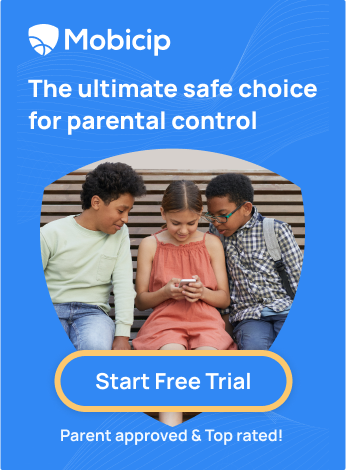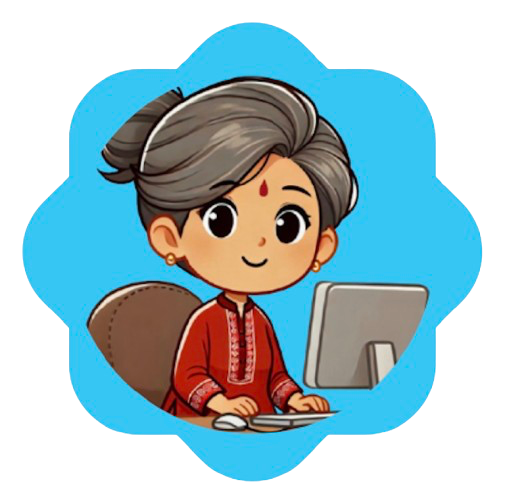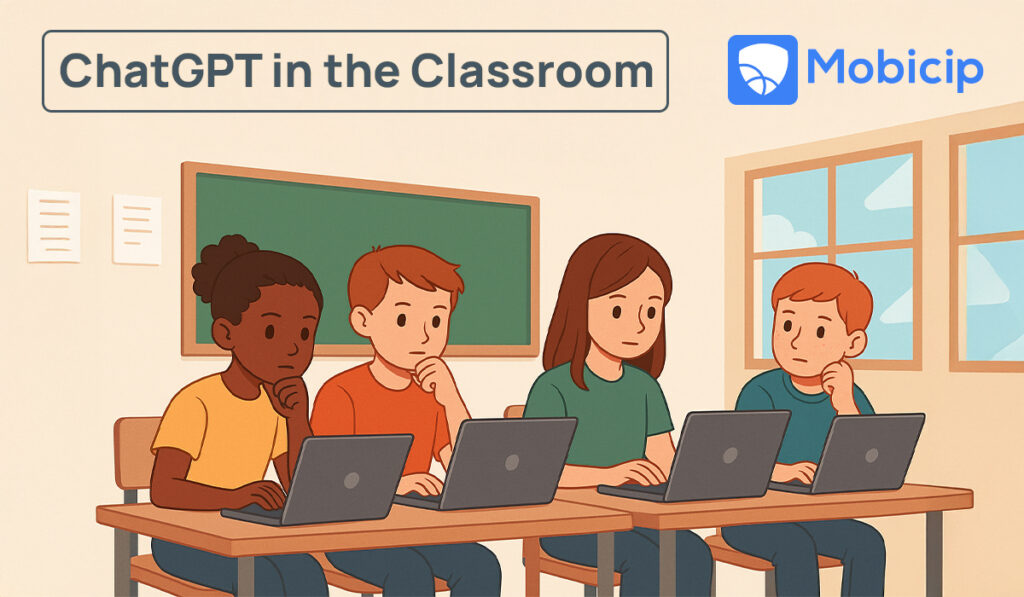Is My Child Spending Too Much Time on ChatGPT?
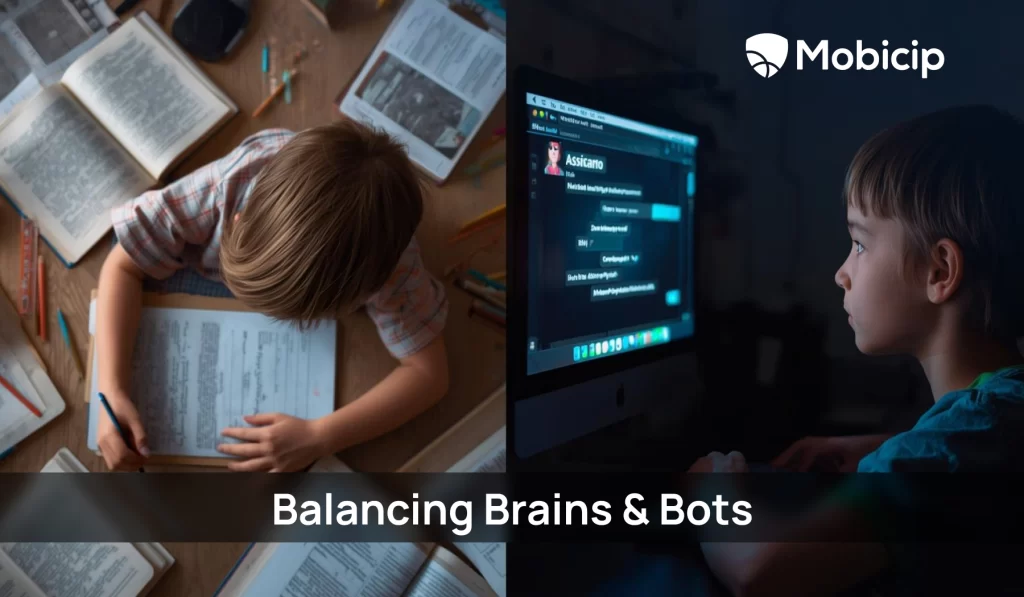
“Is my child spending too much time on ChatGPT?”
This is a question many parents are beginning to ask as AI tools quickly become a natural part of kids’ daily routines. ChatGPT has become the new search engine, only smarter, faster, and far more interactive. A 2024 Pew Research Center survey found that 26% of U.S. teens aged 13 to 17 have used ChatGPT for schoolwork. This is double the number from the year before. Awareness has surged too, with nearly 80% of teens now familiar with the tool. Kids use it to solve homework doubts, brainstorm ideas, explore hobbies, and even chat when they’re bored. And while these features can genuinely support learning and creativity, they can also lead to overuse, shortcuts, and dependence.
The reason to be concerned is because ChatGPT feels productive. It looks like learning, but too much of it can quietly replace problem-solving, offline thinking, or real conversations. This isn’t about banning AI; it’s about helping our kids build a healthy balance. And that’s where tools like Mobicip can make a real difference.
This post breaks down the signs of excessive use, why it happens, and the practical steps you can take (including using Mobicip) to guide your child toward safer, mindful, age-appropriate AI habits.

What Kids Are Using ChatGPT For
Kids today turn to ChatGPT for all kinds of tasks, both academic and fun. It has quickly become a digital companion that answers questions, sparks creativity, and fills downtime. While these uses can be genuinely helpful, each one also comes with potential risks if not supervised or balanced.
Homework help
Positive: ChatGPT can explain tough concepts, provide step-by-step guidance, and make learning less frustrating.
Risk: Kids may start copying answers, skipping the thinking process, or relying on AI instead of building real skills and knowledge.
Creative writing / projects
Positive: It helps kids brainstorm story ideas, refine drafts, and explore new styles.
Risk: Overuse can dilute originality, making kids depend on AI for creativity instead of developing their own voice.
Gaming queries, prompts, roleplay
Positive: It enhances gameplay with tips, world-building ideas, and harmless roleplay.
Risk: It can lead to excessive screen time or exposure to mature themes if prompts go unchecked.
Social conversation / companionship
Positive: ChatGPT offers a safe space to express thoughts or ask awkward questions.
Risk: Kids may use AI as emotional support instead of talking to family or friends.
Curiosity + general knowledge
Positive: Instant answers can encourage exploration and a love for learning.
Risk: Kids may accept incorrect information without verifying it or fall into long, unproductive chat loops.
Signs Your Child May Be Spending Too Much Time on ChatGPT
Because ChatGPT feels educational and harmless, it’s easy for kids to slip into patterns of overuse without parents noticing at first. Many of these signs aren’t dramatic. They show up gradually in your child’s behavior, routines, and the way they approach tasks. The key is to watch for changes that indicate dependence rather than healthy, purposeful use.
Here are the most common signs to watch for:
- Replacing real problem-solving with instant answers
- Using it as emotional comfort instead of talking to family or friends
- Sneaking in extra screen time “for homework”
- Declining interest in offline hobbies and activities
- Quick frustration or anxiety when ChatGPT isn’t available, and addiction.
- Relying on AI to make decisions for them. Even small ones
Spotting these patterns early helps you step in with gentle, effective guidance before overuse becomes dependence.
How Too Much ChatGPT Use Can Affect Kids
When kids rely on AI for answers, ideas, or even comfort, it can quietly shape how they think, communicate, and express themselves. The goal isn’t to demonize AI, but to understand the potential downsides so parents can encourage healthier, more mindful use.
Academic impact
When kids turn to ChatGPT for instant explanations or complete paragraphs, they miss out on the struggle that builds true understanding. Over time, this can weaken problem-solving skills, reduce practice in writing, and make learning feel passive instead of active.
Social impact
If children use AI to talk through their feelings, craft messages, or answer social questions, they may socialize less with friends and family. This can limit real-world communication skills and reduce their confidence in expressing themselves naturally.
Digital safety risks
Kids may not always understand what’s safe to share. Oversharing personal details or engaging with inappropriate prompts can put them at risk. Without guidance, they can stumble into content or conversations that aren’t age-appropriate.
Emotional impact
Some kids begin turning to ChatGPT for reassurance, advice, or comfort. While this feels safe, it can weaken emotional resilience and reduce the habit of seeking support from trusted adults.
Creativity dip
Relying on AI for ideas, stories, or projects may stifle imagination. Kids may skip the messy but important process of brainstorming, experimenting, and creating something truly their own.
Healthy Ways Kids Should Use ChatGPT
ChatGPT doesn’t have to be a distraction or a shortcut; it can be an incredibly helpful tool when used with purpose. The goal is to guide kids toward using AI in ways that support learning, spark creativity, and build confidence rather than replacing core skills. When children treat ChatGPT as a partner in critical thinkinginstead of a source of ready-made answers, it becomes a positive addition to their digital toolkit.
Brainstorming ideas
ChatGPT is great for helping kids get unstuck. Whether they’re planning a story, preparing for a school project, or trying to come up with new hobby ideas, brainstorming with AI can widen their thinking. The key is to encourage them to use the suggestions as a starting point, not the final product.
Learning difficult concepts
If a child struggles with math, science, or grammar, ChatGPT can break down tough topics into simple explanations. This can build confidence and make subjects feel less intimidating. Parents can teach kids to ask follow-up questions to deepen understanding rather than stopping at the first answer.
Practicing languages
ChatGPT can help children practice vocabulary, grammar, and even conversational skills in different languages. This makes language learning feel fun and interactive, especially when real-world practice isn’t always available.
Research supplementation
When kids are researching a topic, ChatGPT can help them explore angles they might not have thought of. It’s best used alongside books, teacher guidance, and reliable sources, helping kids learn to compare information instead of depending solely on AI.
Creative exploration, not replacement
ChatGPT can spark imagination by offering prompts, character ideas, or “what if” scenarios. Kids should still do the actual creating, drawing, writing, building, so AI fuels creativity rather than overshadowing it.
Setting Boundaries: How Much Is “Too Much”?
Finding the right balance with ChatGPT can feel tricky because the tool looks educational and productive. But like any technology, healthy use requires structure. Boundaries not only prevent overdependence but help kids use ChatGPT with intention instead of drifting into endless chats. The right limits will vary by age and maturity, but clear, simple rules give children a healthy digital rhythm.
Provide simple rules of thumb
These guidelines help kids use ChatGPT productively without letting it take over their day:
- 1 hour/day max for academic and creative use
- No ChatGPT during meals, bedtime, or school mornings to protect routines
- Breaks every 30 minutes for mental reset and offline thinking
- Set a purpose before each session (e.g., “Solve 3 math doubts, then stop”)
Older teens may need more flexibility, while younger kids benefit from tighter limits.
Using Mobicip to Track and Manage ChatGPT Use
Mobicip makes healthy boundaries easier by giving parents clear controls:
- Set daily screen time limits
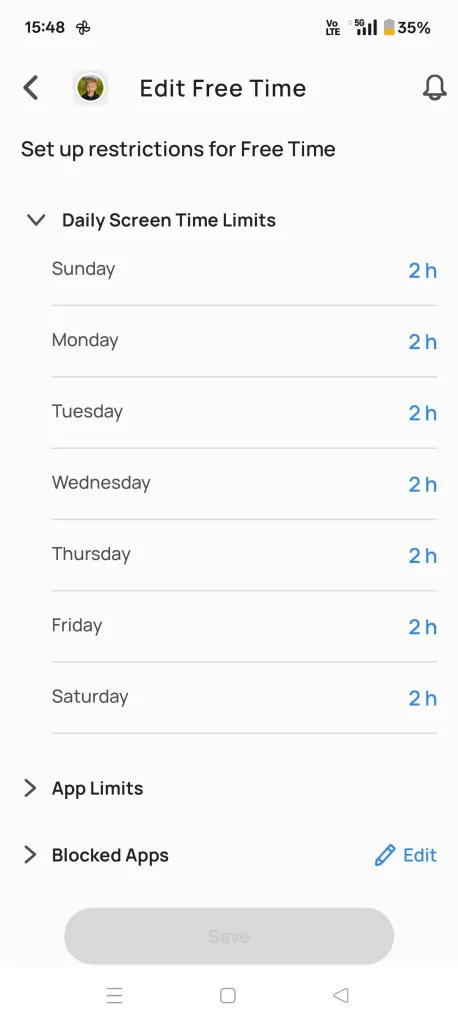
- Block AI tools during homework-free or family zones
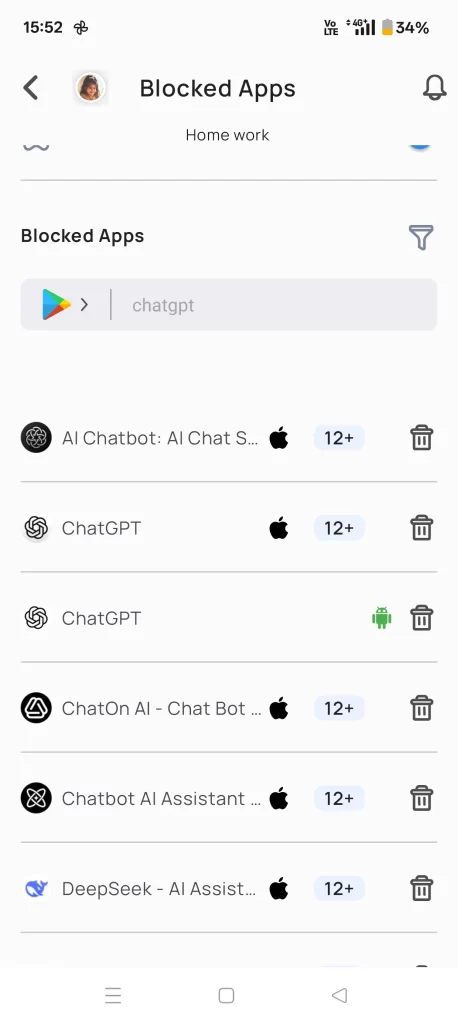
- Enable activity reports to understand patterns and identify overuse

- Create focus schedules to reduce multitasking and distractions
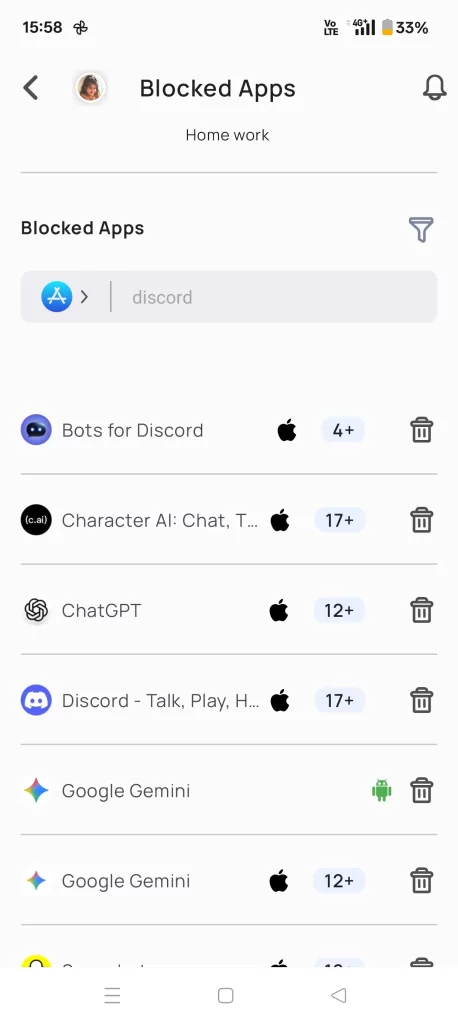
- Filter unsafe content or chat prompts based on your child’s age

Teach Kids Healthy AI Habits
- Encourage them to try first, then ask AI
- Teach what personal information must never be shared
- Explain AI hallucinations and the importance of verifying facts
- Promote creativity over shortcuts
When to Step In
Watch for:
- Grades slipping
- Emotional dependence on AI
- Hiding or deleting chats
- Arguing when asked to stop
- Using AI late at night
These signs indicate it’s time to reset boundaries and guide healthier habits.

Conclusion
As AI becomes woven into everyday life, the real opportunity for families is to help children develop a healthier relationship with technology—one built on awareness, curiosity, and balance. Instead of thinking of ChatGPT as something to fear, we can treat it as a tool kids must learn to navigate thoughtfully, much like calculators or the internet in earlier generations. What matters is not how often they use AI, but how intentionally they do it.
Looking ahead, kids will grow up in a world where AI is everywhere, embedded in classrooms, workplaces, and daily decision-making. Teaching them to use it wisely today prepares them for that future. This means helping them understand when AI is helpful, when to pause and think on their own, and when to seek guidance from the people who care about them. With clear boundaries and supportive tools like Mobicip, families can move from worry to confidence, knowing that kids are building digital habits that will serve them well for years to come.
Watch related video here.

